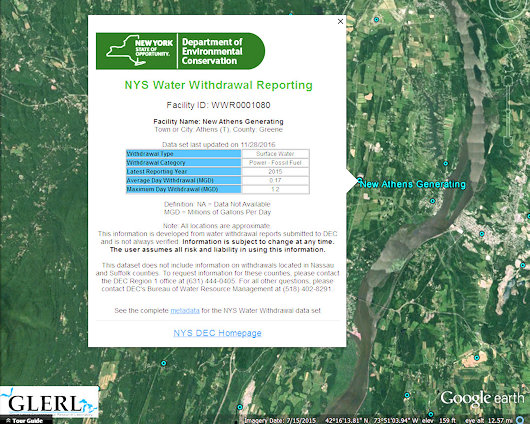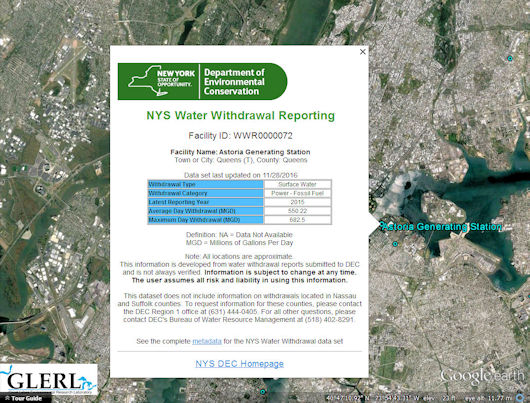
June 8, 2016Closed-Cycle Cooling at New Athens Plant Is Thousands of Times More Efficient than Once-Through Cooling at Astoria PlantThe recently published application of the New Athens Generating Company for a water withdrawal permit for its New Athens Generation Station in Athens, New York provides a stunning illustration of the benefits of closed cycle cooling. The notice published by the New York State Department of Environmental Conservation (DEC) states that the Athens Generating Station is applying to take "1.5 million gallons of water per day from the Hudson River for the facility's air-cooled condensers." A comparison of the 1.5 million GPD permit amount requested by Athens with the 1,246 million (or 1.25 billion) GPD amount permitted to Astoria Generating Station in Queens, shows that New Athens is requesting less than 1/800ths of the amount of water permitted to Astoria. See DEC Continues to Rubber Stamp Water Withdrawal Permit Applications as Objections Mount. Yet the generating capacity of the New Athens plant is more than the current generating capacity of the Astoria plant. According to Talen Energy's webpage, the generating capacity of the New Athens plant is 1,080 MW, which is slightly greater than the 959 MW generating capacity of Astoria station, as shown on Eastern Generation LLC's website. The average daily usage of each plant is much less than the plant's permitted amount. According to the water withdrawal dataset posted on DEC's website, the average daily withdrawal of the New Athens plant is 170,000 gallons of water per day, while the Astoria plant's average daily withdrawal is 550,220,000 GPD, or 3,057 times as much. The dramatic reduction in usage resulting from closed-cycle cooling at the Athens plant results in an equally dramatic reduction in aquatic impact. DEC’s 2011 guidance on Best Available Technology ( BTA ) for Cooling Water Intake Structures requires closed-cycle cooling. The guidance states that cooling water intake structures will be subject to one of four “performance goals” when selecting BTA—each of the four goals requires closed-cycle cooling. In view of the tremendous reduction in aquatic impacts from closed cycle cooling and DEC's BTA policy requiring closed cycle cooling, why isn't DEC requiring all generating stations in New York to adopt closed cycle cooling technologies? Screen Shots of New Athens and Astoria water usage data from DEC's water withdrawal kmz file on Google Earth
Posted by Rachel Treichler on 06/08/16, updated 07/22/19.
Copyright 2021, Rachel Treichler
|
|








